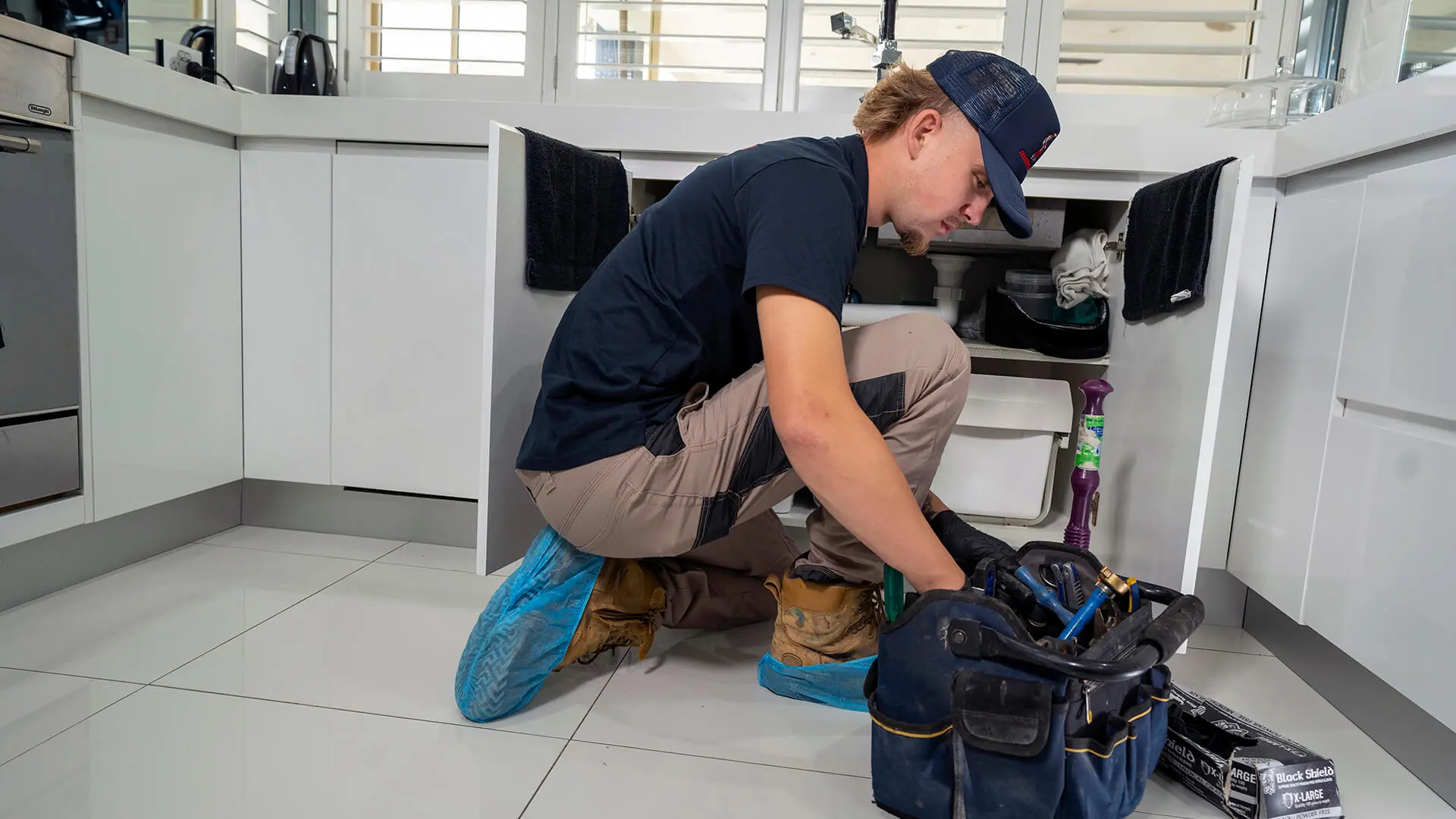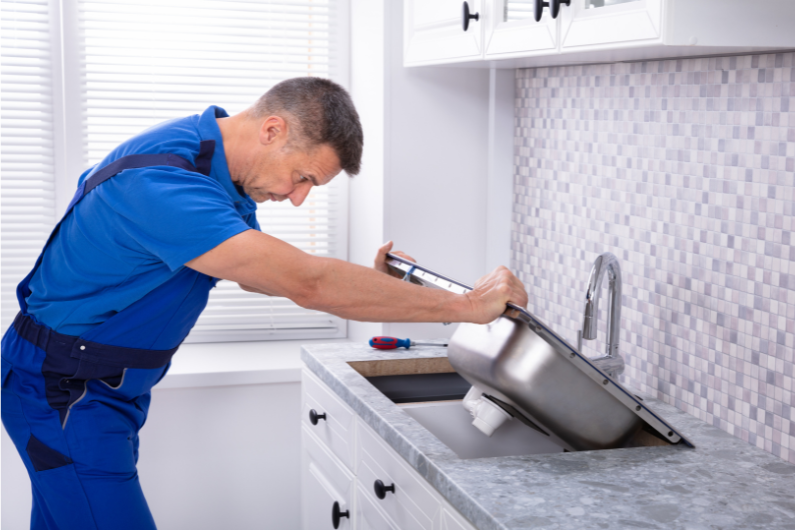Practical Ways To Fix Slow-Draining Sink Problems
Practical Ways To Fix Slow-Draining Sink Problems
Blog Article
We've stumbled upon this article on Three Common Ways to Fix a Slow Drain listed below on the internet and concluded it made sense to talk about it with you in this article.

Introduction
We've all existed: You're cleaning your teeth or cleaning your hands, and you observe the water pooling in the sink. Instead of quickly swirling away, it lingers, turning your once-refreshing morning regimen into a miniature swamp scene. A slow-draining sink isn't just bothersome; it's often an indicator of bigger plumbing problems prowling under the surface area. The good news is that many slow-draining sinks can be repaired with a little expertise, a couple of standard devices, and some perseverance. Prepared to tackle this job head-on? Allow's roll up our sleeves and dive right in.
Comprehending the Causes of a Slow-Draining Sink
Prior to you begin poking around in your pipes, it helps to understand what might be creating the slowdown. Comprehending the root cause makes it less complicated to select the appropriate solution.
Tools and Materials You'll Require
The right tools make all the distinction. Luckily, you won't require a totally stocked plumbing's van to finish the job.
Step-by-Step Overview to Fixing a Slow-Draining Sink
Currently, let's get into the nitty-gritty. This detailed procedure will certainly assist you with basic techniques to recover your sink's drain.
Step 1: Get Rid Of and Tidy the Stopper
Often, the stopper (that little plug you lower to block water) is the very first perpetrator. Remove it meticulously and wipe any type of hair or substance entraped around its base. Rinse it extensively before placing it back in position.
Action 2: Make Use Of a Plunger to Dislodge Debris
Got that bettor prepared? Placement it over the drain and offer it a couple of firm pumps. The idea is to produce suction that can loosen any kind of clog. If you see littles debris floating up, you're on the right track.
Step 3: Attempt a Drainpipe Snake or Cable Hanger
If the plunger does not do the trick, it's time to draw out the drainpipe snake. Carefully feed it right into the drainpipe and spin as you go. You may really feel some resistance-- that's likely the clog. Maintain twisting and drawing up until you eliminate the blockage. If you do not have a drain snake, a corrected the alignment of cord hanger can work in a pinch.
Step 4: Use a DIY Drainpipe Cleanser
An all-natural cleaner made from baking soda and vinegar can break down residual gunk. Put half a cup of baking soft drink right into the drain, adhered to by half a cup of vinegar. Let it fizz for about 15 minutes, then flush with warm water. This chain reaction commonly does marvels for minor clogs.
Step 5: Reconstruct and Check the Sink
Put every little thing back with each other and run the tap. Does the water currently swirl away at a respectable speed? If yes, provide yourself a pat on the back. If not, don't misery-- there are still a couple of more tricks up your sleeve.
Essential Tools for Do It Yourself Repair Works
A plunger is your best beginning factor. A tiny, sink-sized bettor produces suction that can remove minor obstructions. For even more persistent obstructions, a drainpipe serpent (often called a plumbing's auger) functions marvels. A pair of handwear covers, a flashlight, and perhaps a pair of safety goggles are additionally helpful.
Advised Cleaning Solutions
Light dish soap and hot water can assist break down oily build-up. A blend of baking soda and vinegar is a reliable home remedy, and enzymatic cleansers supply an even more eco-friendly technique. Maintain chemical drainpipe cleansers as a last resort, as they can be severe on your pipes.
Common Wrongdoers Behind Slow Drain
So, what's blocking points up? Usually, it's a combination of day-to-day particles-- assume hair, soap scum, toothpaste residue, and leftover food particles. Over time, these tiny bits build up and cling to the pipeline wall surfaces, gradually tightening the flow and making it harder for water to go through. In some cases, natural resource from difficult water can also include in the substance, creating the best storm for persistent obstructions.
When is it Time to Take Action?
If you observe the water draining pipes slower than normal, it's an excellent idea to step in sooner rather than later on. Waiting too long might bring about complete obstructions, undesirable odors, and even pipeline damages. If the water takes greater than a few secs to clear out after shutting off the faucet, consider it a warning and get ready to place on your do it yourself hat.
Safety First: Safety Measures and Prep work
Before you launch into unclogging setting, think about safety. You're managing potentially dirty water and particles, so slip on a pair of handwear covers. If you're making use of chemical cleansers, ensure the space is well-ventilated and comply with the guidelines on the tag.
Safety Equipment and Work Space Configuration
Set some old towels or dustcloths around the sink location to capture sprinkles. Remove any kind of products that may get in your way, like soap dispensers or tooth brush owners. Make sure you have excellent lighting-- get a flashlight if needed.
Alternate Techniques for Stubborn Clogs
Not all clogs are created equivalent. If your sink still declines to comply, think about these different services.
Baking Soda and Vinegar Method
We currently touched on this, however it's worth noting again. This gentle, green method is much safer than chemical cleaners and commonly quite effective.
Enzymatic Drainpipe Cleansers
Enzyme-based cleansers utilize natural germs to digest organic matter. They're an exceptional option if you're seeking to prevent extreme chemicals. Simply remember, they might take a bit longer to work their magic.
Chemical Drain Cleansers: Pros and Cons
Chemical cleaners can blast via challenging blockages quick, however they're not without drawbacks. They can generate warmth and fumes, damages pipes if utilized excessively, and posture environmental threats. Use them moderately, and always adhere to the directions thoroughly.
Preventive Measures to Maintain Your Sink Flowing
Avoidance is the most effective cure. By taking on a few easy behaviors, you can keep your sink from decreasing to begin with.
Regular Cleaning Routines
Clean down the sink container and component area routinely. Remove hair or food bits before they have a possibility to wash down the drain.
Staying Clear Of Hazardous Materials Down the Drain
Hesitate before unloading coffee premises, oil, or fibrous veggie scraps down the sink. These offenders cling to pipe walls, creating blockages in time.
Routine Upkeep Checks
Set up a quick regular monthly examination. Run hot water through the sink for a couple of minutes, focusing on the flow. If it appears slow, act fast prior to it comes to be a full-blown clog.
When to Call an Expert Plumbing Technician
Sometimes, despite how tough you try, that block simply won't budge. That's when it's time to generate the pros.
Indications That Show a More Serious Problem
If your sink drains pipes slowly despite multiple efforts, or if you notice water supporting in other components (like your shower or toilet), you might have a more significant pipes concern lurking deeper in the system.
Balancing DIY Efforts with Professional Help
While DIY can save you money and provide a sense of achievement, there's no embarassment in calling a specialist. A professional plumbing technician can assess your entire pipes arrangement, guaranteeing there's no underlying damages or long-lasting issue that could cost you more in the future.
Contrasting Costs and Long-Term Solutions
Before deciding, think about the big picture. A low-cost, quick fix might solve the problem temporarily, yet buying a more long-term service could save you cash and stress in the future.
Weighing the Expenses of DIY vs. Expert Fixes
DIY solutions often set you back bit greater than the rate of a bettor or a bottle of cooking soda. Specialist solutions, on the other hand, come with a price tag but might prevent repeated issues and pricey repair services later.
Purchasing Quality Fixtures and Upgrades
If your sink's design adds to frequent clogs, it could be worth updating to higher-quality fixtures or altering the pipes design. Consider this a financial investment in your house's functionality and convenience.
Verdict
A slow-draining sink can seem like a minor irritation, however it's frequently an indicator that your pipes needs a little TLC. By comprehending the origin, employing the right devices and methods, and committing to easy safety nets, you can keep your sink moving easily. And when all else fails, never hesitate to call a specialist-- your home's plumbing is worth the investment in treatment and maintenance.
4 Tips to Fix a Slow Draining Sink
Removing the Pop-Up
This is a great place to start when it comes to troubleshooting a slow draining sink. If your sink has a pop-up, carefully take it out and remove debris that has built up around the tool. This will also allow you to see if there are any significant blockages in the drain that you can pull out on your own to help clear up the issue.
Use a Zip-It Tool
Like a snake for a large drain, a zip-it tool helps clear out any debris or hair from a sink drain. A tool like this can be used with a drain that pops out or not as it s thinner than most snake-like tools.
Use a Drain Cleaner
Whether making an at-home cleaner or buying a solution at the store, this is a common fix many turn to when it comes to a slow draining sink. There are several options available for purchase at local supermarkets, but for those who prefer to create their own solution, one of the most common is the following.
How to Unclog a Drain Naturally
Pour boiling water down the drain Pour cup of baking soda down the drain Pour cup of vinegar down the drain Wait 10 minutes Pour boiling water down the drain again Turn on the hot water faucet to clear out the solution Use a Plunger
As a worst-case scenario option, a plunger may be a good option for those who are still struggling to get debris out of their drain. This could be especially useful if there is a large item that you suspect may be significantly stuck down the drain.
https://www.abaileyplumbing.com/blog/2021/august/4-tips-to-fix-a-slow-draining-sink/

Do you like reading up on Solved! How to Fix a Slow Sink Drain? Give a remark down the page. We will be delighted to hear your opinions about this blog posting. We hope to see you back again soon. Those who appreciated our blog post kindly consider to pass it around. I thank you for reading our article about Solved! How to Fix a Slow Sink Drain.
Pricing Report this page